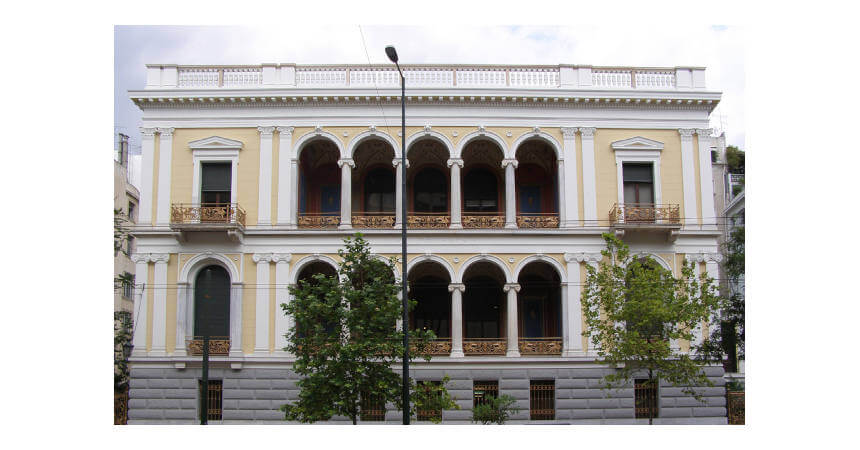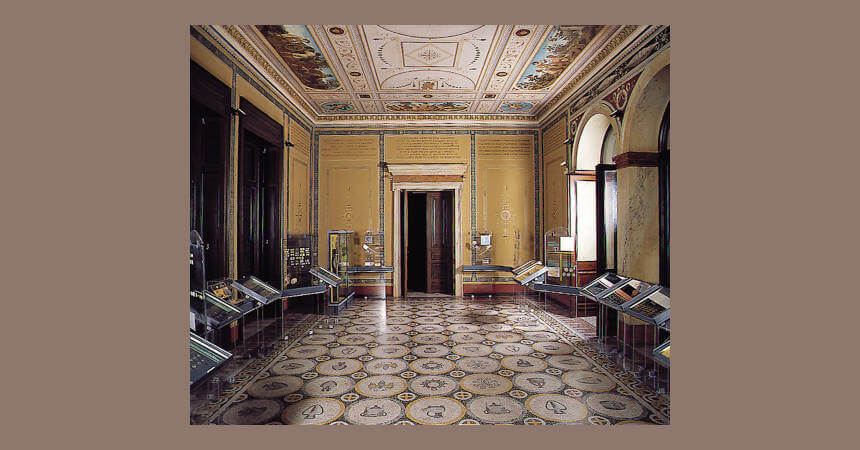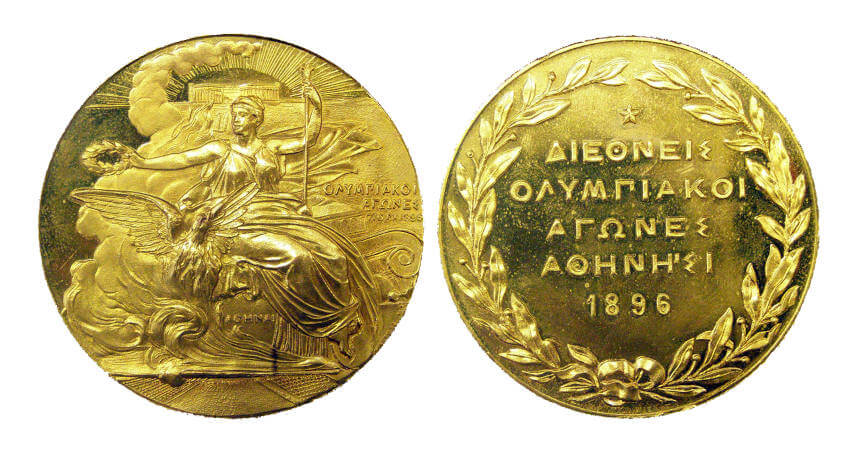Numismatic Museum Athens
Wenn es kein Logo gibt, wird diese Spalte einfach leer gelassen. Das Bild oben bitte löschen.
(Dieser Text wird nicht dargestellt.)
12 Eleftheriou Venizelou Street
GR-106 71 Athens
Tel: +30-2103632057
Founded in 1829, the Numismatic Museum Athens is in a neo-classical mansion once the home of Heinrich Schliemann, a self-taught archaeologist who named it “Iliou Melathron” (Palace of Ilion, or Troy) after the ancient city he excavated in the 1870s. Schliemann also collected coins, and his 1881 home is now the Museum for both Greece’s national numismatic collection and his own collection.
There are more than 600,000 coins, lead seals, medallions, and balance weights from ancient Greece, Rome, Byzantium, the European Middle Ages and modern times. About 2,500 coins are exhibited in more than 40 displays in 13 rooms on both floors.
First Floor Galleries
One of the first floor’s galleries is the “Schliemann Hall,” where Schliemann’s collection of coins of Ithaca, Thera (now Santorini), the Troad, Roman Empire, and coins from his excavations of Troy are in their original wooden table-top cases.
Three of the remaining five first floor galleries are themes of coins of the ancient Greek World.
- Origins and Spread. The large “Hesperides” Hall contains exhibits about the use of coinage as historical sources, the metals and techniques of coin production, and the names of ancient Hellenic coins. Specimens from Lydia from the 7th-century BC are the first coins of standard weight and bearing the stamp of the issuing city. There are also many coin hoards on display. One, from Karditsa where 149 Aeginetan silver staters hidden in an olpe, were thought to have been buried around 440 BC.
- International and Common Coins. Examples are the silver tetradrachm and the gold stater.
- Iconography and Ideology. Many of the exhibits of its ancient Greek coins are displayed in topical fashion, i.e., “monetary iconography,” rather as an historical evolution from the earliest coins of Lydia to its last rulers. Shown are the portrait heads—rulers like Ptolemy V, Alexander III, and Antichus I Soter, while the eagle on the shekel of Tyre and the owl on the Athenian tetradrachm are some of the many animals pictured.
- The Great Donors of the Numismatic Museum. What was once the dining room now honors collections by its “Great Donors”—Greek collectors, many from the Diaspora who preserve their ancestral heritage.
The second floor has eight galleries with different themes:
- Coinage in the Roman World. From the 3rd century BC to the 5th century AD.
- Coinage in the Byzantine World. The gold, silver, and copper coins of the solidus monetary system.
- Coinage in the Western and Eastern Medieval World. The development of coins and monetary system of Western Europe and the first Arabic coins.
- Coinage in the Modern and Contemporary World. From the 16th century to the present, highlighting many of the silver and gold crowns of the European states.
- Coinage in the Modern Greek State. From the 1928 silver phoenix and the modern drachm in 1932 to its end with the 2002 euro.
- he World of Medals. In Schliemann’s winter office, medallic art that portrays historical events, rulers, buildings, and personalities.
- Money and Society. The relationship between people and money in various time periods is examined in Schliemann’s summer office with emphasis on notable coins like the tetradrachm, solidus, dirham, ducat, thaler, pound sterling, dollar, and euro.
- Money and Movies. The relation between man and money in scenes from different time periods.
Numismatic highlights include the Athenian silver decadrachm (475-465 BC) and the denarius of Marcus Junius Brutus with two daggers on the reverse (43-42 BC).
This text was written by Howard M. Berlin and first published in his book Numismatourist in 2014.
You can order his numismatic guidebook at Amazon.
Howard M. Berlin has his own website.









